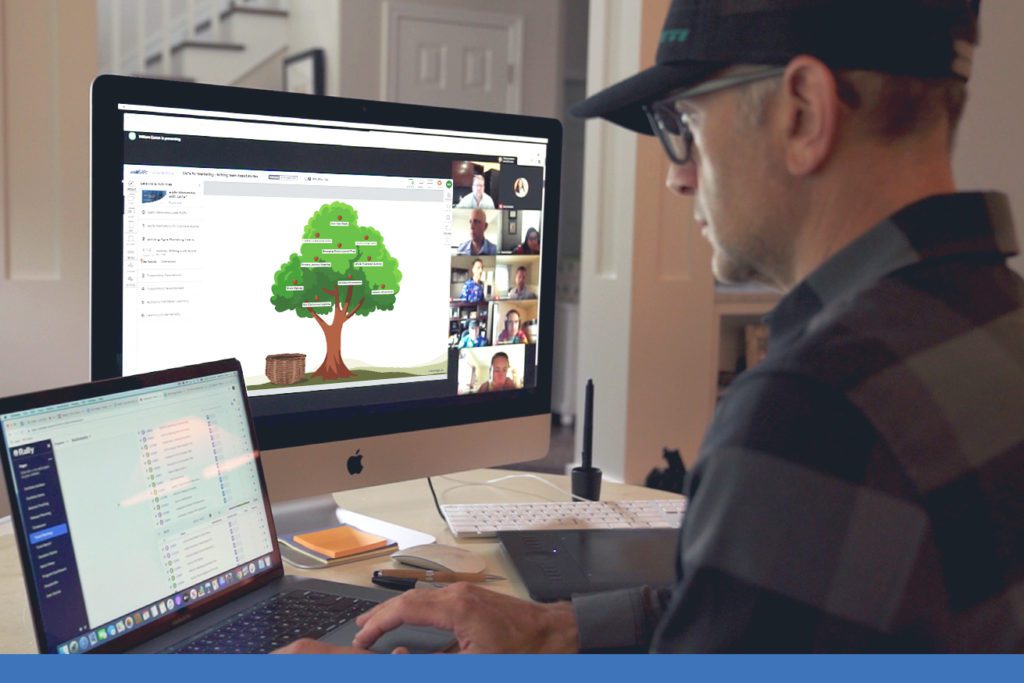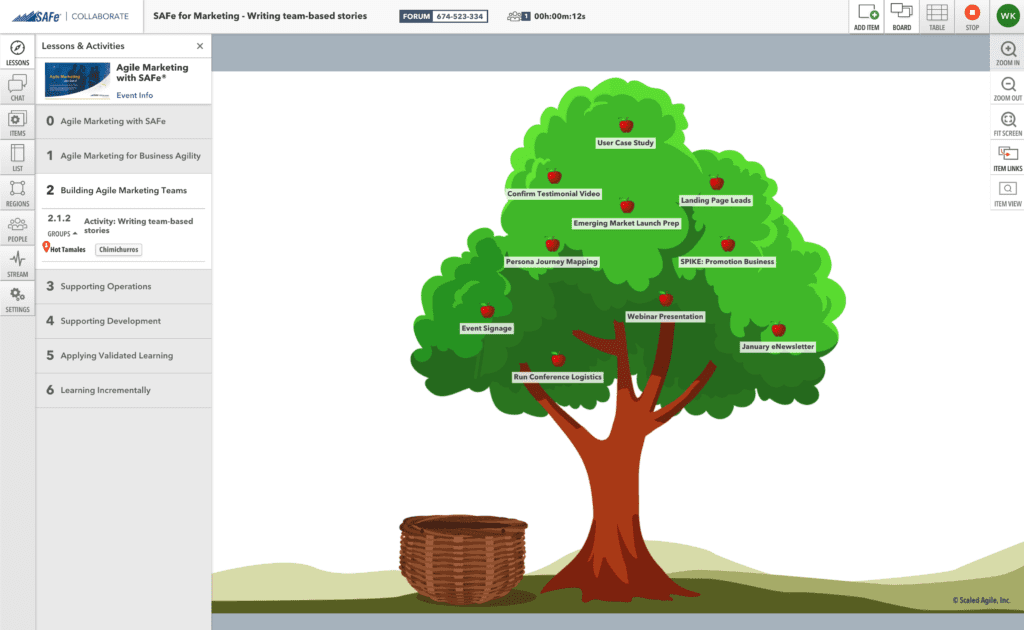The backstory

Due to the global pandemic, almost overnight, we had to convert all 2020 SAFe® classes to virtual delivery. I’m most proud of how the worldwide SAFe community came together and experimented to figure out remote delivery. My contribution was to imagine the class experience and determine how to help instructors facilitate learning activities remotely. We came up with remote training aids which were simple slide templates for each activity that groups could collaborate indirectly. It was an early stage MVP in our journey to evolve remote learning.
Remote was not for the faint of heart
As instructors, we had to figure out the tooling and how to set up those templates for the class. I remember when I remotely delivered new Lean Portfolio Management Alpha and Beta classes, it took me close to 30 hours to set up the activities and groups for each class. Delivering back-to-back classes, while good for our work, was exhausting because setup activities would bleed into our evenings and weekends. I could definitely understand why some SPCs were hesitant to venture into remote delivery.
The virtual classroom evolution
We kept experimenting with different formats and tools in class, and learning with each one how to make the experience better. We started to use SAFe® Collaborate, our cloud-based visual workspace, to standardize the activity templates. Early feedback was positive about the learning and ideation experience. But attendees still felt that having too many windows open was distracting and tedious, especially during activities with short timeboxes. For instructors, it took time to set up these templates for each group and class. And while we were able to automate a portion of the setup via script, that wasn’t the case for course updates. Instructors still had to revise class activities when Scaled Agile introduced a new class version.
During a hackathon at Scaled Agile, colleagues built an interactive virtual classroom prototype in SAFe Collaborate that solved the navigation and usability challenges.
This hackathon idea won first place and got approved as a feature during our next PI Planning.

Virtual classroom for the win
I recently taught my very first class using our virtual classroom, and it was such a wonderful experience. I’ve switched from being a sceptic to a fan because it’s so awesome! All the templates were indexed by lesson, well organized, and easily accessible for both students and teachers. Students could quickly navigate to their own group activity and even browse around to see what other groups were doing.
The learning experience was much richer and more fun for the students, especially when we got to the PI Planning simulation. The best part for me as an instructor? I could set up the class and groups with a single action! I simply showed up to class, clicked a button to designate the number of groups, and started teaching.
Lean Agile Centers of Excellence (LACEs) and SPCs that need to update templates with every course upgrade will score an even bigger win with the virtual classroom experience. Scaled Agile now provides the activity templates and automatically updates them when new course versions are released. This is a huge value and time saver.
If you’re an SPC or a LACE member, I encourage you to try our virtual classroom in your next class. Just select “SAFe Virtual Classroom” as you set up your next remote class, and explore the different activities. Or, watch the remote trainer enablement video to see a demo.
If you’re like me, you’ll find it hard to go back!
About Deema Dajani

Deema Dajani is a Certified SAFe® Program Consultant Trainer (SPCT).
Drawing on her successful startup background and an MBA from Kellogg Northwestern University, Deema helps large enterprises thrive through successful Agile transformations. Deema is passionate about organizing Agile communities for good, and helped co-found the Women in Agile nonprofit. She’s also a frequent speaker at Agile conferences and most recently contributed to a book on business agility.
Share:
Back to: All Blog Posts
Next: Three Ways Informal Learning Networks Emerge